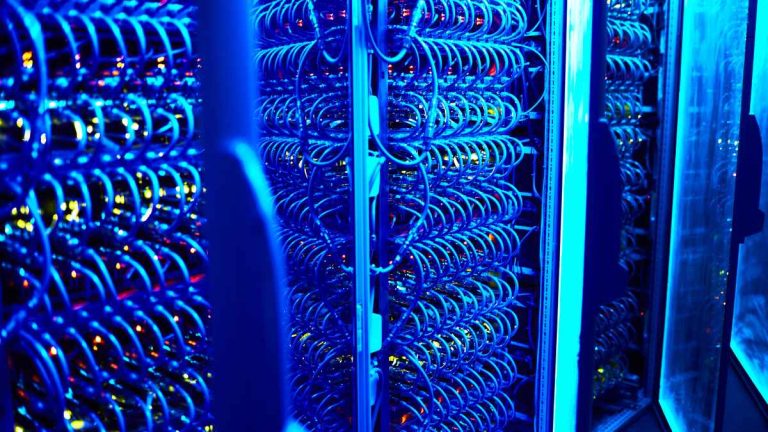In the outskirts of Dublin, a rapid expansion of data centers has created a new challenge for Ireland: balancing the demands of tech giants with the country’s energy resources. These massive facilities now consume more electricity than all urban homes combined, leading to serious concerns about energy sustainability as they power the growing wave of artificial intelligence (AI) technology.
Ireland, which has positioned itself as a hub for global tech companies such as Amazon, Google, and Microsoft, now finds itself reassessing the implications of this growth. Official figures reveal that Ireland’s data centers accounted for 21% of the nation’s total electricity consumption last year, the highest reported figure by any country to the International Energy Agency. This alarming trend has prompted Ireland’s grid operator to impose a moratorium on new data center projects near Dublin until 2028.
Despite advances in renewable energy, Ireland still heavily relies on fossil fuels for electricity generation. This dependence raises doubts about the feasibility of meeting ambitious climate targets, particularly as data center demands threaten to undermine efforts to reduce greenhouse gas emissions.
Paul Deane, an energy researcher at University College Cork, highlights Ireland’s situation as a microcosm of a broader issue many nations may face in the coming years due to the surge in AI and digital technologies.
Darragh Adelaide, a young activist from a working-class suburb in Dublin, has emerged as a vocal opponent of the unchecked growth of data centers. Living close to one of Ireland’s largest data center clusters, he argues that the energy demands of these facilities have a direct impact on rising electricity prices for local residents. “It’s kind of an outrageous number of data centers,” he says, emphasising the need for accountability in energy consumption.
Ireland has long been an attractive destination for tech companies due to favourable tax policies, a skilled workforce, and its strategic position as a node for undersea internet cables connecting to Europe and the United States. However, the unchecked growth of data centers around Dublin has drawn increasing scrutiny. The Irish Environmental Protection Agency has raised alarms about pollution from on-site generators and the significant energy usage contributing to already high household electricity bills.
Regulatory actions initiated in 2021 have aimed to curb this growth. Officials announced that Dublin had reached its limit for data centers and encouraged tech firms to explore options beyond the capital for future expansions. This decision has sparked frustration among developers who now face delays in connecting fully operational data centers to the grid.
Digital Realty, a Texas-based company, has one such data center at Grange Castle awaiting permission to connect to the electricity network. Dermot Lahey, the company’s director of data center implementation in Ireland, stresses that the power constraints are hindering the growth potential for AI and technology sectors in Ireland.
Meanwhile, some developers are looking beyond Dublin for new opportunities, with County Offaly emerging as a potential growth area for data centers powered by renewable energy. Local authorities are promoting this bog-dotted region as a future tech hub, despite concerns from residents about the environmental impact and past degradation caused by peat extraction.
As Ireland navigates the complexities of accommodating data center growth while safeguarding its energy future, the political landscape may shift with the upcoming formation of a new coalition government. Analysts predict that the pressure to ease restrictions on data centers will increase, potentially leading to greater strain on the nation’s electricity system.
In conclusion, the situation facing Ireland’s data centers serves as a cautionary tale for countries worldwide. Striking a balance between economic growth and environmental sustainability will be crucial in navigating the challenges posed by the digital age.


